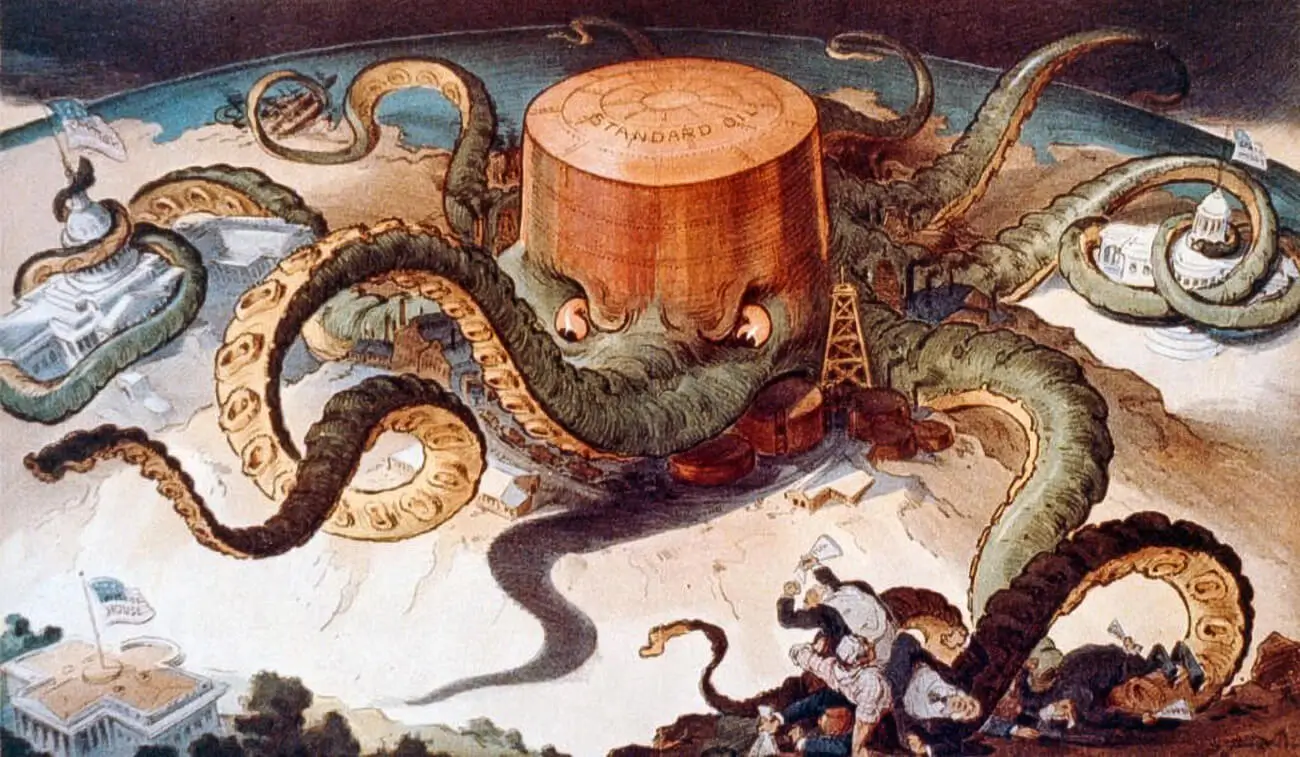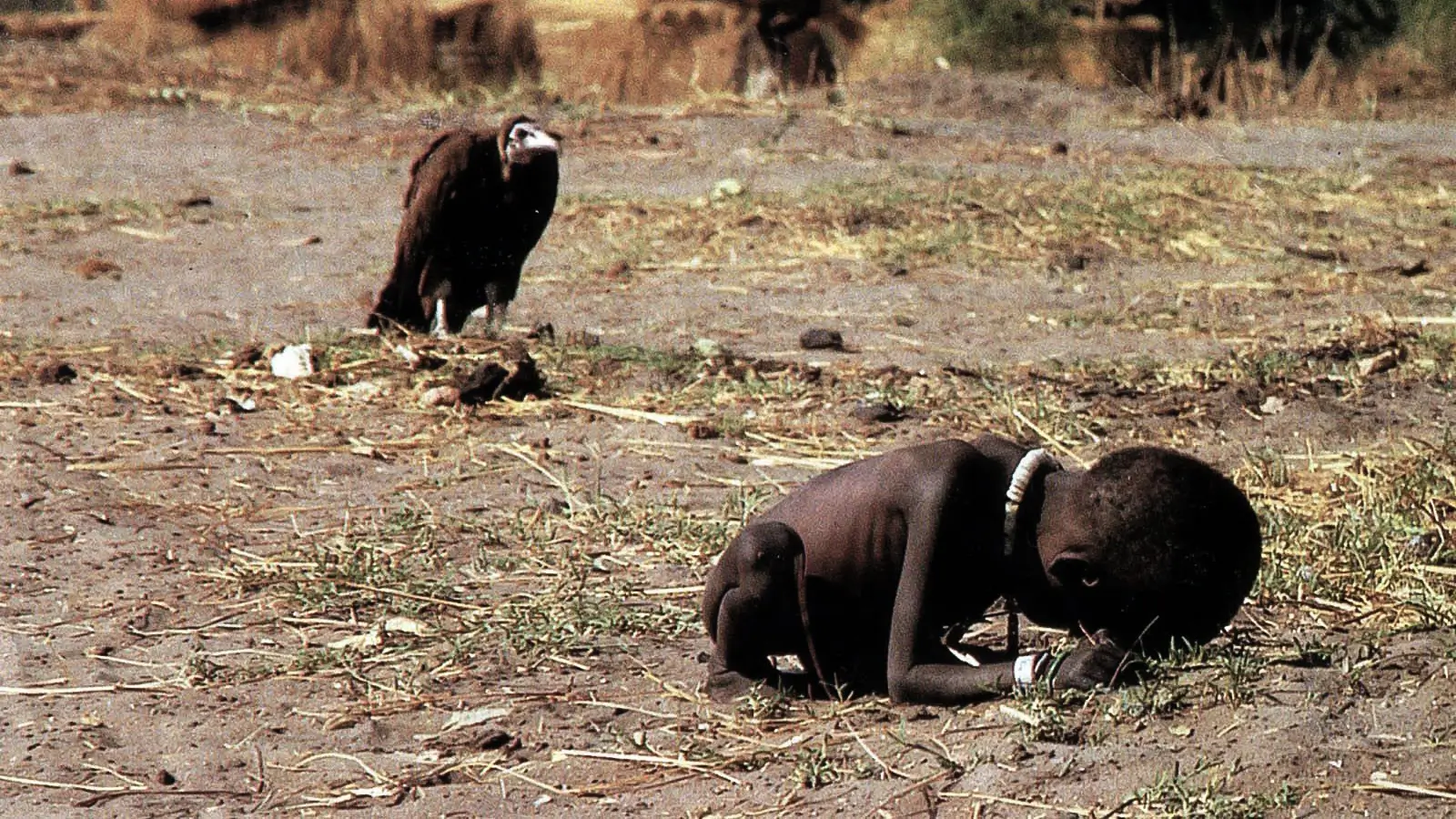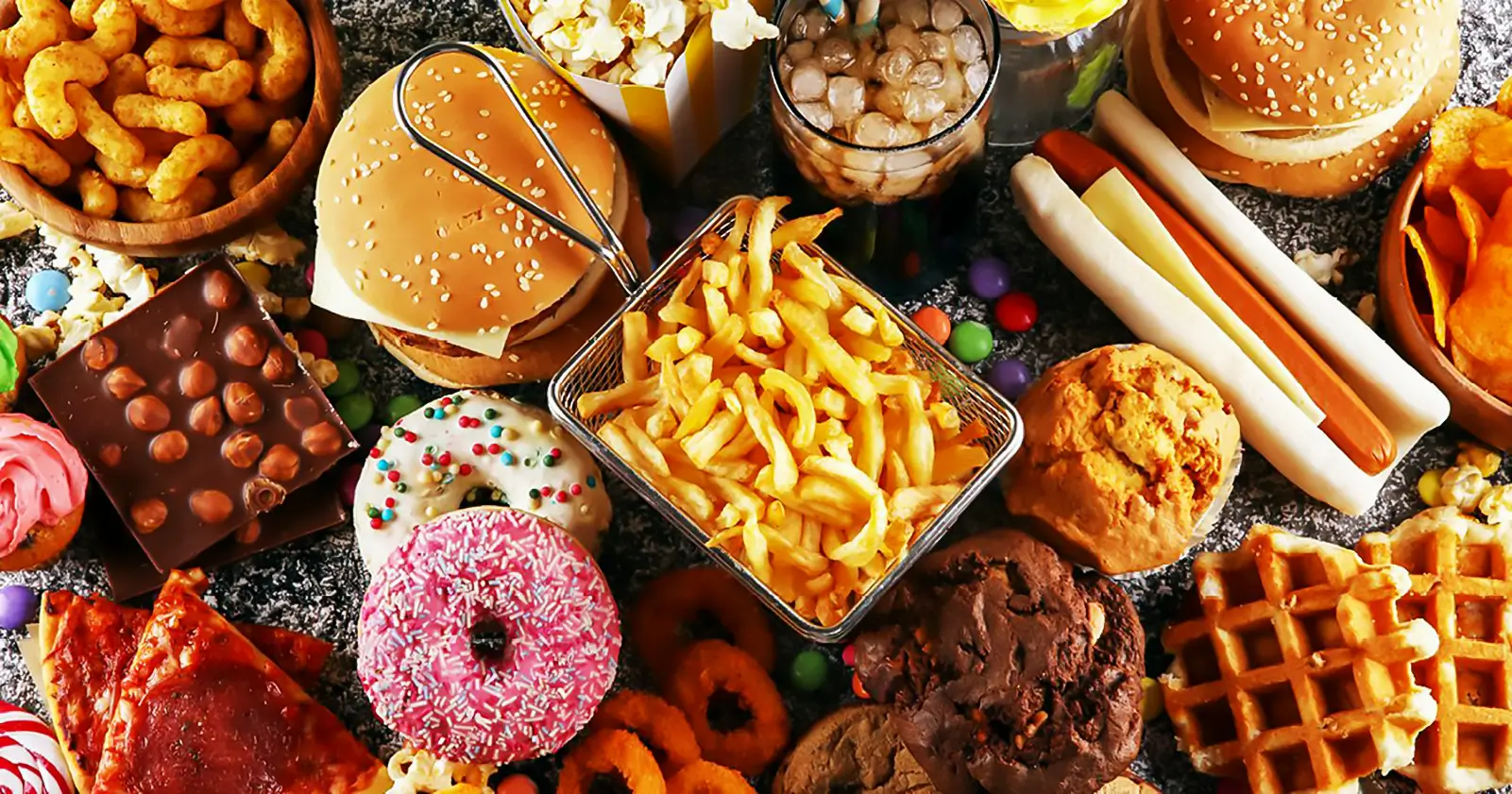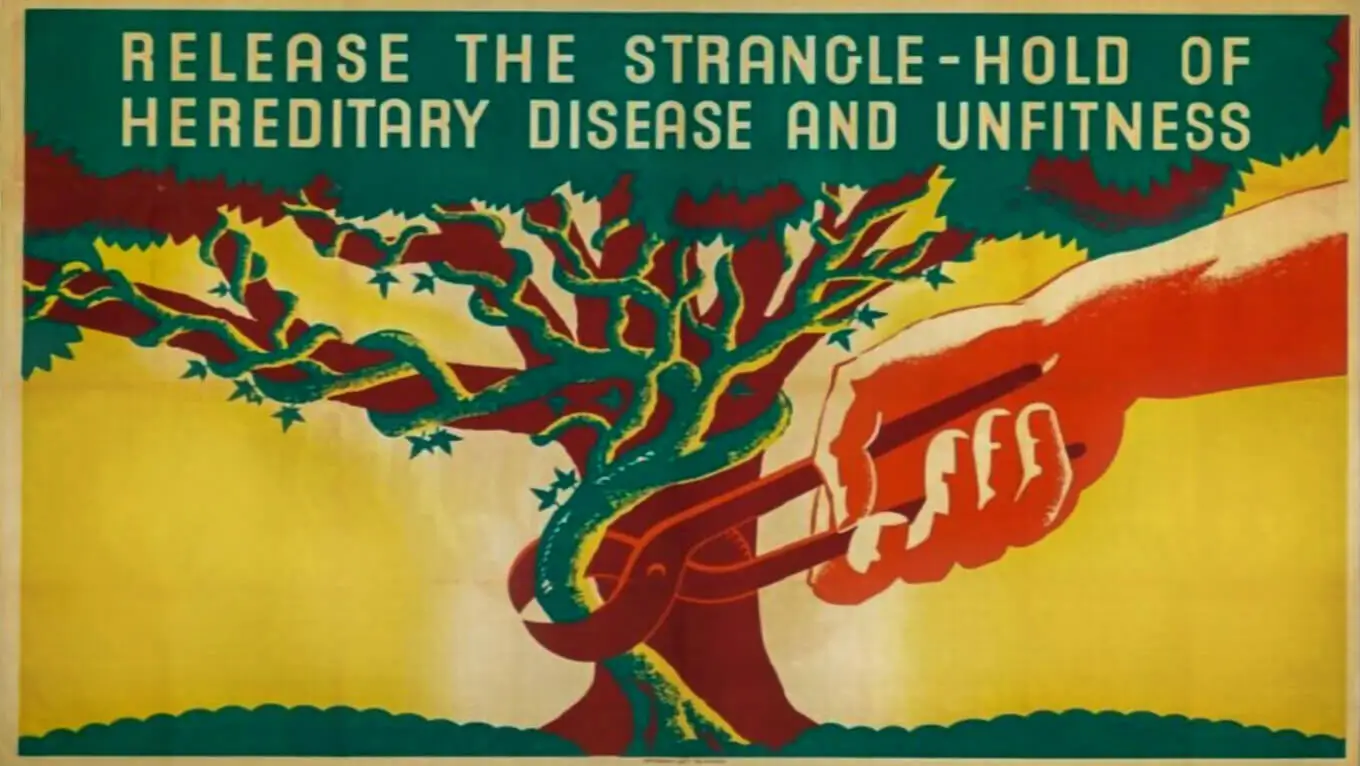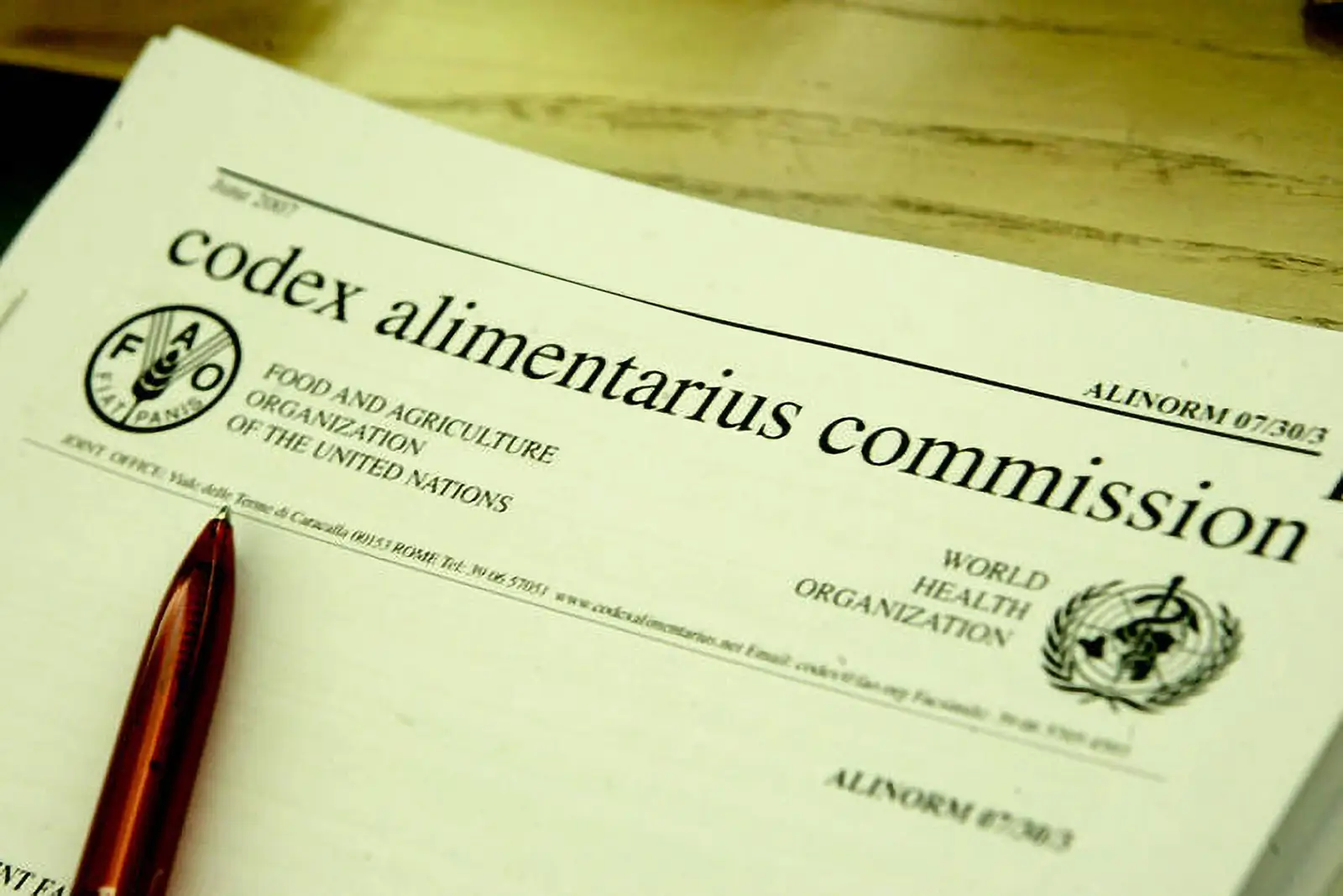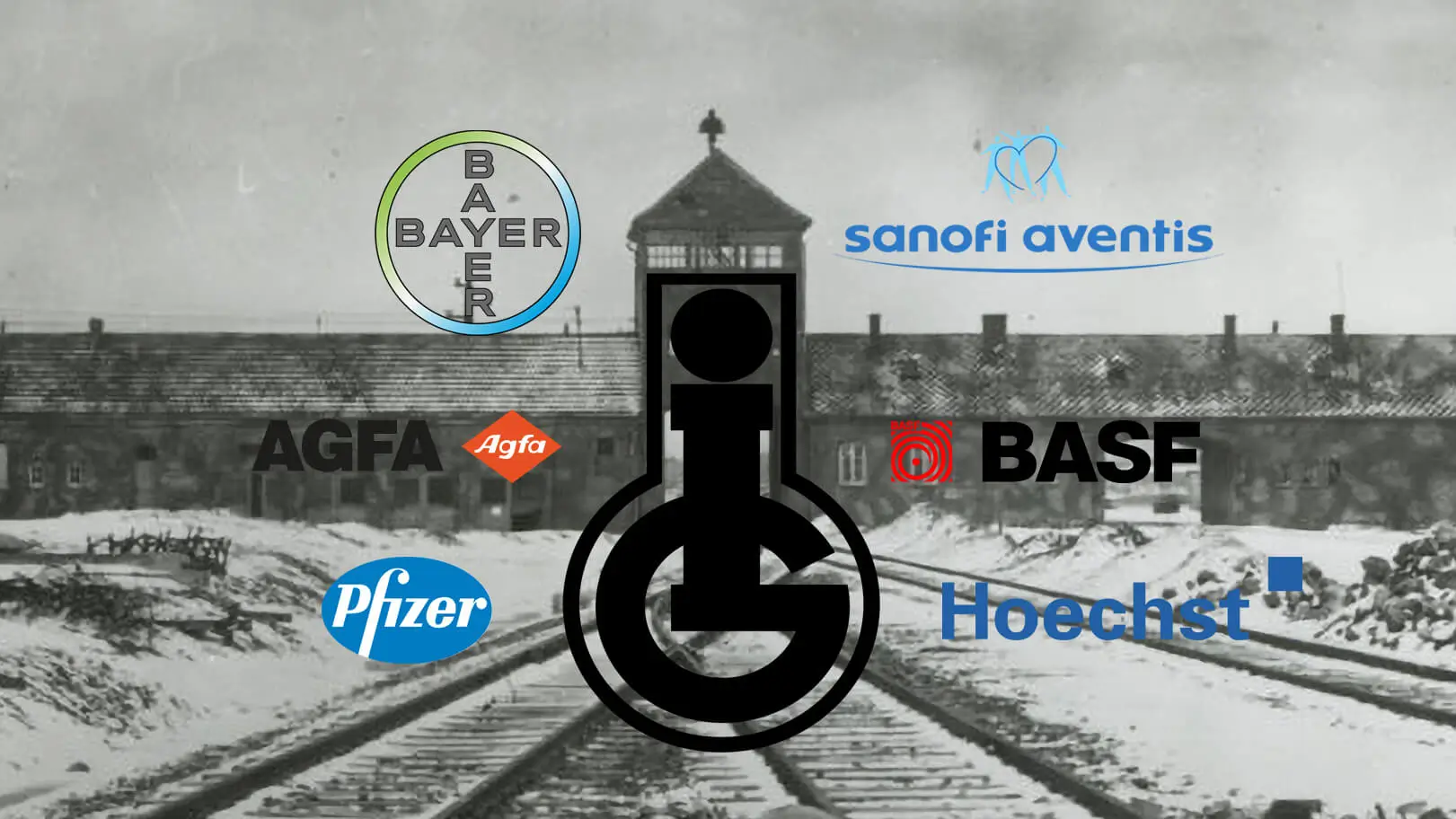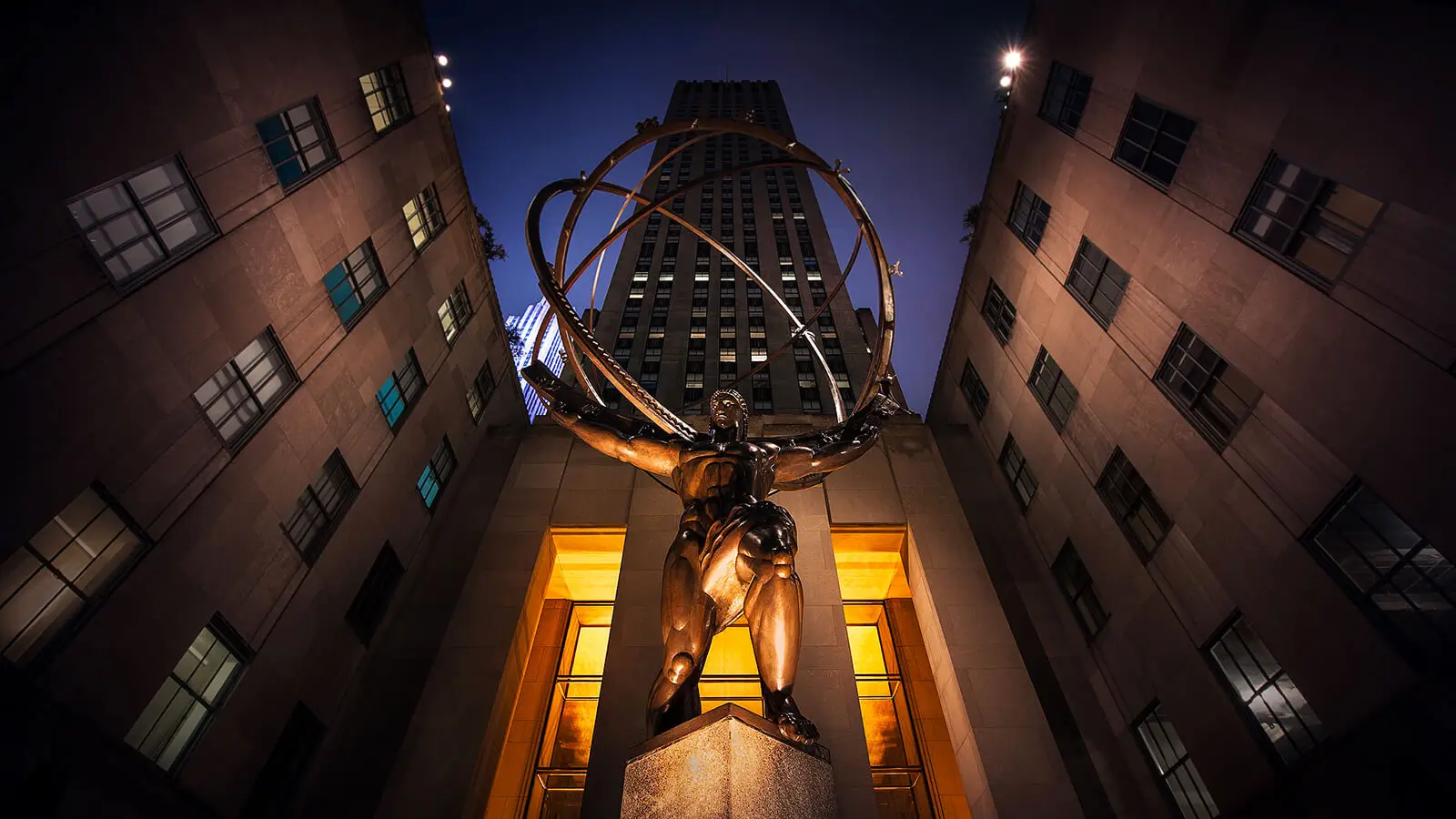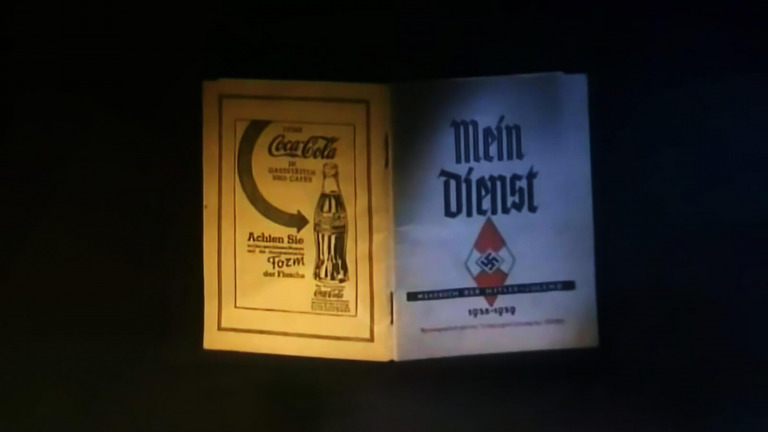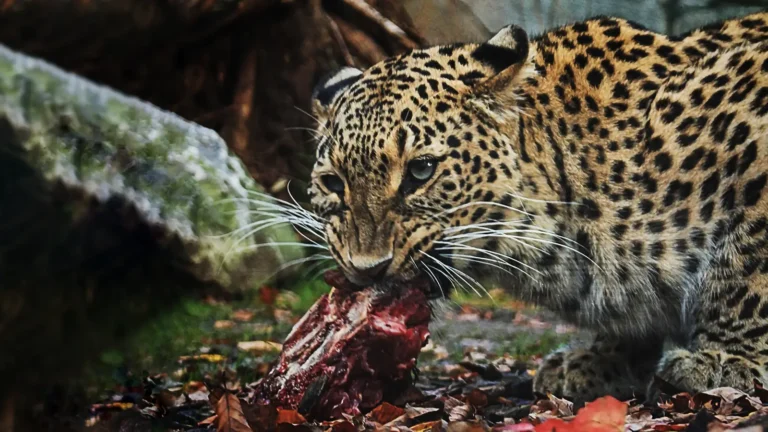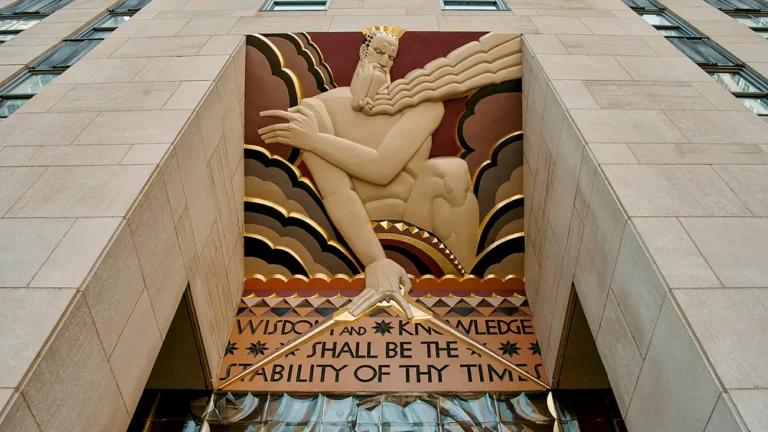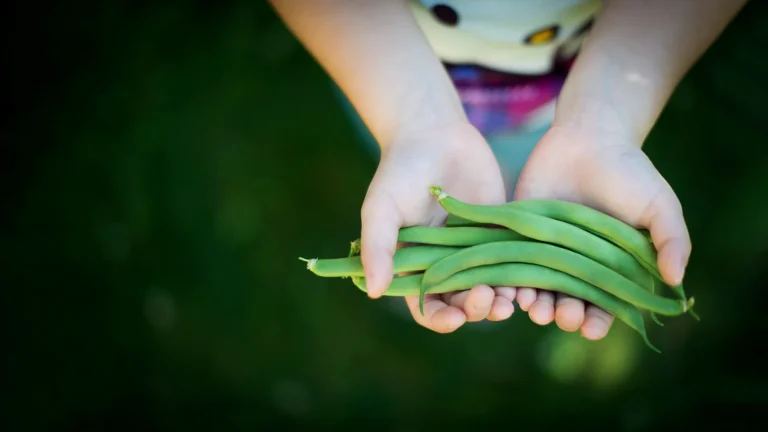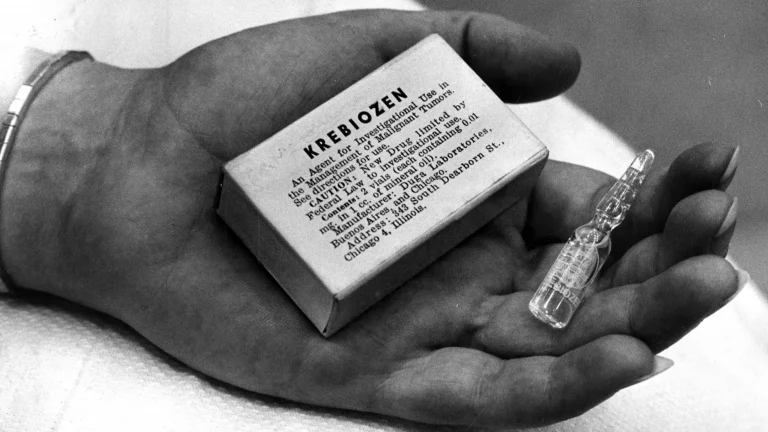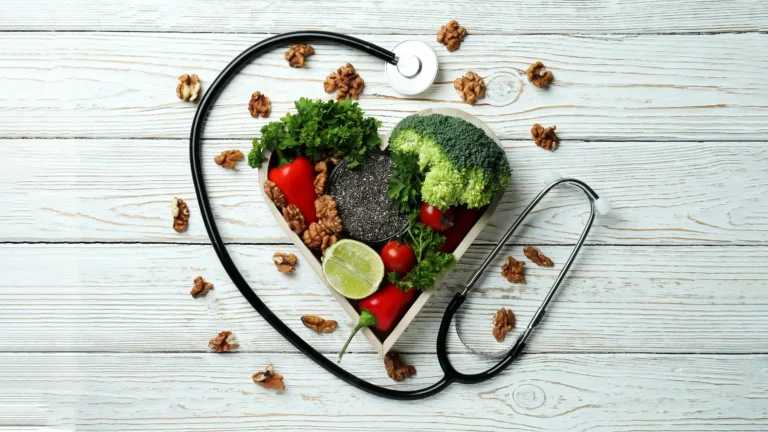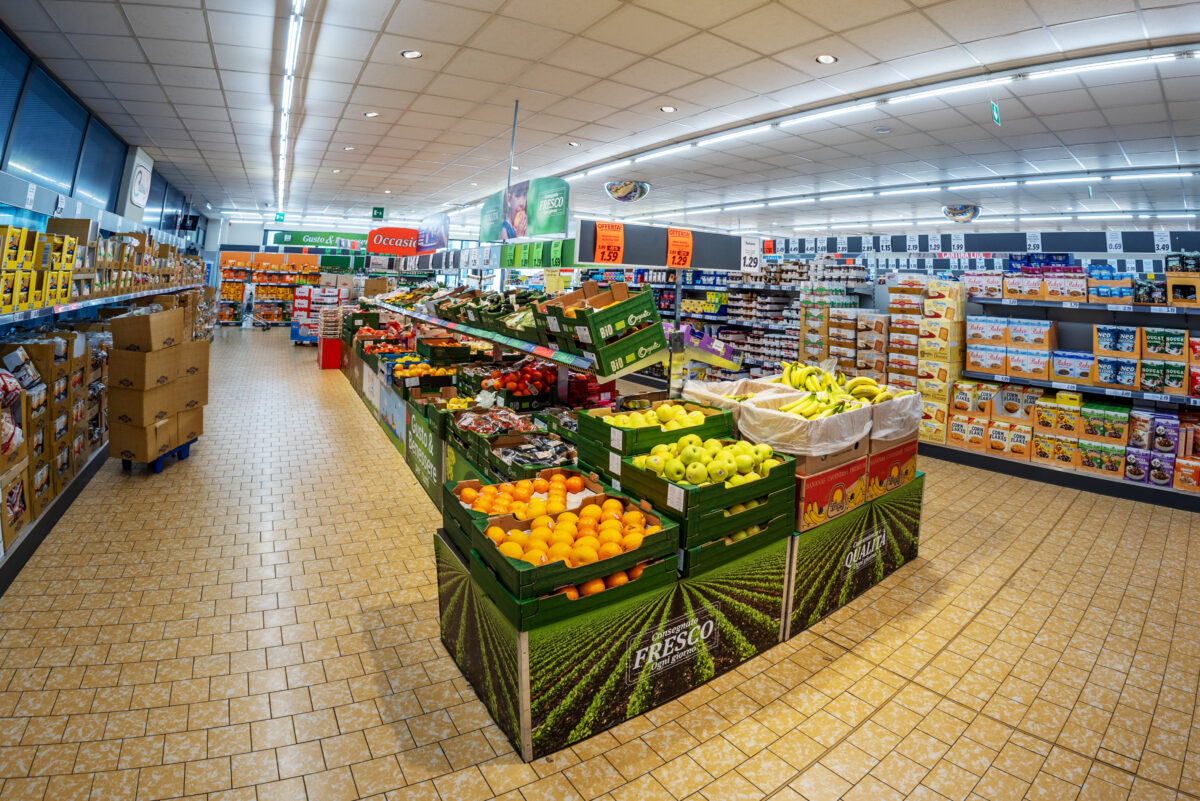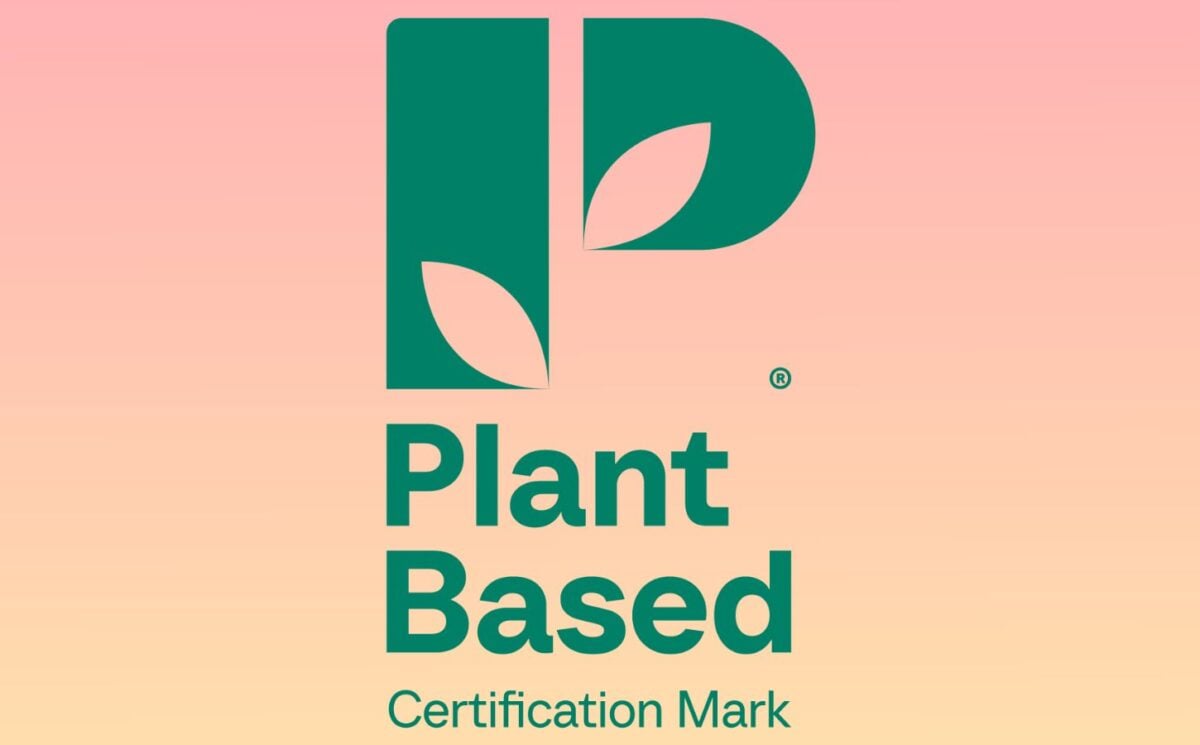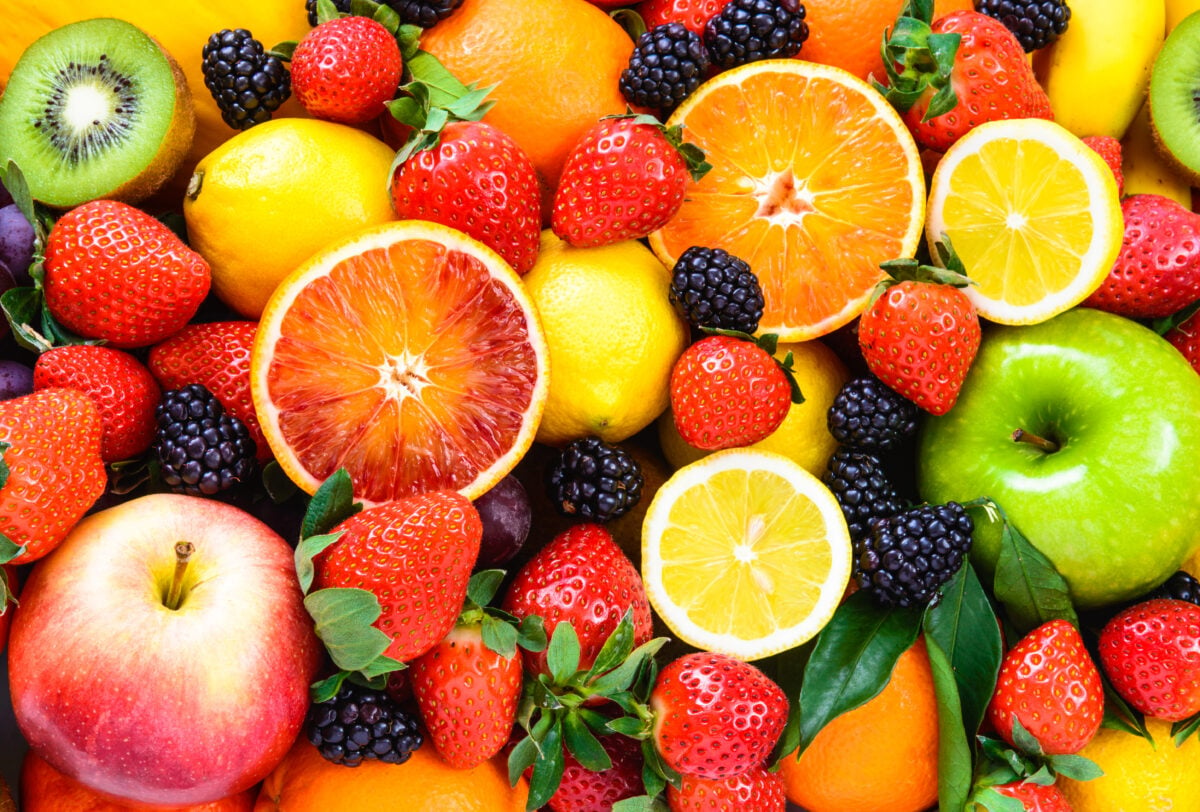Food Industry- Historical review
Food industry cartel have complete control over the entire world grain trade and also controls dairy, oil, meat, fruits and vegetables, sugar, and all forms of spices.
Milos Pokimica
Written By: Milos Pokimica
Medically Reviewed by: Dr. Xiùying Wáng, M.D.
Updated September 2, 2023The food industry is not just any industry. Food is the most essential item in existence. It is more important than gold, it is more important than any other sector in economics. Today people are dissociated from the importance of the food industry due to the agricultural revolution after the discovery of synthetic fertilizers. In the entirety of human existence, food was scarce. For the entirety of human existence, food was the most important item in everyone’s budget. The food industry was not our local candy supplier but our lifeline for existence. And if you control the trade and manufacturing of food or in other words you control the food industry then you control everything. In the entirety of human existence food industry was the pillar of power and control.
It all started a long time ago.
It all started after the Neolithic revolution. The first excess of production was what created the first need for trade. If you are a stone age farmer and you produce more grain than you can eat you are in a food industry business. Then you would probably go down the hill to the fisherman’s village to trade some of your grains for fish. That is the first time in history that the food industry was beginning to emerge. Then the population expanded and the first city-states are formed. Then the first empires and so on.
Eventually, the land was owned by lords, and the rest of the peasants were just slaves.
In the time of Assyria before Rome, there was already slavery and global-scale food trading. From China and India to the Mediterranean. Then with the help of the Phoenician fleet all over the Mediterranean and the Black Sea area. Already in antiquity, trade was booming.

When Rome defeated the Phoenicians in the Punic wars, it took over the trade.
Actually to understand the economy of Rome is to understand the economy of Persia because Romans as a tribe are from the middle east not from Europe. They migrated to Europe from Asia Minor by colonization and by first eradicating by genocide real European people that lived in Apennine Peninsula known as Etruscans. They brought with them the same culture and system that were present in the great empires like Assyria and Persia with them, the economy of scale based on trade and exes in food production controlled by a small number of traders and senators and oligarchs, and slavery. Then they eradicated in genocide all of the people (meaning women and children too) that lived in Cartage, took over the trade routes, and then moved to dominate the rest of Europe with a system that existed in Asia Minor and the great empires of old. Don’t forget history. It would be hard to understand the current world. We only have what we remember.
Subdued external territories in Gaul, Brittany, Spain, Sicily, Egypt, North Africa, and the Mediterranean littoral had to ship grain to the noble Roman families, as taxes and tribute. Usually, the grain tax was higher than the land could bear. The same Roman system was implemented in feudal Europe after the collapse of the Western Roman Empire. The empire collapsed, but money in the coffers remained, and the people running the show just changed their names into something local or Christian and became traders, bankers, nobility, or cardinals.
The city-state of Venice took over grain routes, particularly after the Fourth Crusade (1202-04). Crusades had one more important aspect except for religion. And that is regaining control back from the Islamists of the ancient Roman trade routes. The same oligarchy that runs trade in the Roman empire now runs Venice and its trade.
The main Venetian thirteenth-century trading routes were eastern termini in Constantinople, the ports of the Oltremare (which were the lands of the crusading States), and Alexandria, Egypt. Products from these ports were shipped first to Venice, and then from there made their way up the Po Valley to markets in Lombardy, or over the Alpine passes to the Rhône and into France. Venetian trade extended to India, China, and Mongol empire in the East and France in the west.
Near the fifteenth century, Venice remained still very much a merchant center. However, it had started to spread some of its grain and other trade to the ruling Burgundian duchy, whose current headquarters was Antwerp. This empire, including a big part of today France, continued from Amsterdam and Belgium to much of present-day Switzerland.
Venetian-Lombard-Burgundian nexus, give birth to each of the food cartel’s six leading grain companies.
These companies were either founded or inherited a substantial part of the operations that they have today. By the eighteenth century, the British Levant and East India companies had absorbed many of these Venetian operations and extended the trade globally to the new colonies in the Americas and Africa. However, it was just expansion by the same ruling elite. Oligarchy just moved its center of operation into the City of London (not the capital city of England and the United Kingdom, known as London, big difference) and expanded trade, banking and slavery to the global level.
In the nineteenth century, the City of London-based Baltic Mercantile and Shipping Exchange became the world’s leading instrument for contracting for and shipping grain.
And why did they move?
In the seventeen century, there was a conflict between bankers and the House of Stuart. Bankers of Europe had joined forces and financed William of Orange who invaded England and disposed of Stuarts and became King William III of England. He was sovereign Prince of Orange from birth, Stadtholder of Holland, Zeeland, Utrecht, Gelderland, and Overijssel in the Dutch Republic, and with the help of bankers from 1672 King of England, Ireland, and Scotland.
At the end of the sixteen century, England was in financial ruin.
Gold and silver reserves were spent, and the civil war morphed into the war with France and Netherlands in the next 50 years. The land was in bad shape, and William could not pay the army. He needed the money, and he excepted the” help” from the bankers but with one small counter favor.
They asked to open a private bank that will have the status of the central bank.
In return, they will bring gold as deposits which will be the bases to print money that will be lent out to the state. So that is how in 1694 the Bank of England was created, the first private central bank in the world that had the right to print money (eventually out of nothing) legally. Read this again.
So that is how in 1694 the Bank of England was created, the first private central bank in the world that had the right to print money (eventually out of nothing) legally.
England as a state started to take the loans that were registered as the national debt. Over the period of 300 years, the oligarchy from Venice spread to control trade and banking in France, Germany, the Netherlands, and eventually England. And by controlling England also controlled its rising colonies as well.
Moving to England the Venice trade and banking families practically just kept the power and wealth that they made back in the Roman Republic and expanded their influence on America, Africa, and big parts of Asia.
The administrative headquarters are changed, and that is today the City of London. The City of London county is not a city that contains the historic center and the primary central business district (CBD) of London. Now if you miss it read it again. The City of London is a country in London the same way the Vatican is a country in Rome. It is also a county of England, being an enclave surrounded by Greater London. It does not fall under the legal system of Great Brittan. The City of London is considered to be sui generis, which is Latin for “in a class by itself.” That it is one of the oldest self-governing local states in the world, with roots going back as far as medieval times when it was set up as a commune. Its right to exist predates that of parliament and even the Magna Carta of 1215, which was the charter of rights between King John and the barons, makes special reference to its “ancient liberties” and how they extend to all freemen of the realm. The status has afforded the jurisdiction of a Lord Mayor since the days of William the Conqueror. The City of London is a state within a state. The deep state of western civilization if you like. The controlling center.
The City of London Corporation prefers to view itself as an autonomous jurisdiction that defends the rights of freemen. Freemen are those considered not to be the property of a feudal lord but who enjoy privileges such as the right to earn money and own land. This has meant that the freemen of the City have uniquely benefited from the right to trade as merchants or members of a guild or livery. They also control their own police force operated and paid for by the City of London’s own coffers and tax system. The City of London is a real British ‘’Crown” not the House of Windsor.
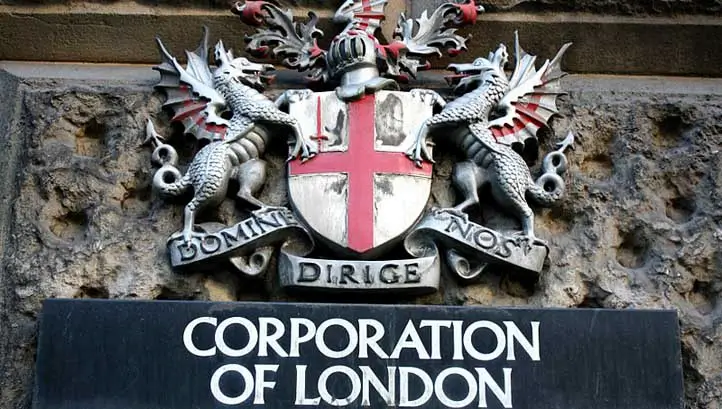
Actually, Windsor is just the name of the castle their real last name is Saxe-Coburg and Gotha (German: Sachsen-Coburg und Gotha). They changed it to Windsor to be more in line with the local population as a marketing move. Before the First World War, it was the family of the sovereigns of the United Kingdom, Belgium, Portugal, and Bulgaria, and branches of the family still reign in Belgium, the United Kingdom, and the other Commonwealth realms. Trade and banking cartels that ruled over Europe back in the middle ages unlike royalty that is just there for the show still rule with the same way of conducting business. Only the headquarters of the cartels and their companies had changed. Today one of the big headquarters is the City of London.
This to us mortals is mostly unknown. In front of this structure is the City of London. For the ceremonial and public eyes is the ceremonial Lord Mayor that they chose themselves without an election. They are just formally under the House of Windsor but not in reality, and actually, I will correct myself, not even formally. Queen of England needs to ask for permission from the Lord Mayor if she wants to visit the city. And she can do that only in the civil uniform. The Lord Mayor of London is the City of London’s mayor and leader of the City of London Corporation. For instance, Sir Michael Bear and Sir Roger Gifford both were Lord Mayors of London. On both occasions, they welcomed the “Queen” in this manner. In full ceremonial uniform while the ‘”Queen” was in civilian dress, standing one step below.
For you, this might just be some coincidence or some irrelevant ceremonial show. It is because today you and most of the people in the schools have been learning that all of this is just history that has nothing to do with the modern world. It is just some reminisce of the past and that we today have democracy and human rights and laws and that there are UN and WTO beside governments just in case and other nice organizations that are there to help the world and to protect us from evil. The real reality is inverted, and your perception of reality is based on propaganda brainwashing and emotional manipulation of social engineering schooling for the masses. Freedom of information is freedom of choice. Wrong information, wrong perception, wrong choice with good intentions.
Bank of England still stands with all of the influence and all of her creations like the Federal Reserve of America and all other bank-financed corporations, multinational companies, and businesses.
Let us look just 100 years ago to see how had food business and trade had been organized. The first company in the modern sense or one of the first was the East India Company. That is if we do not count The City of London Corporation. The Corporation’s first recorded Royal Charter dates from around 1067 and actually had its privileges temporarily stripped by a writ quo g under Charles II in 1683, but they were later restored and confirmed by Act of Parliament under William III (one and the same “banking boy” of Orange) in 1690, after the “Glorious Revolution”.
Power and control and economy and politics and war, it is all one and the same run by an oligarchy. There is no food or drug or oil or banking or any other type of business. It is all the same and run by the same people. If you go high enough on the ladder, you can see this. Average individual look around the supermarket and sees all kinds of different brands and thinks that there is some concurrency between different companies. In reality, it is a scam designed to fool you so that you will think that. In reality, one food company can have 100 different brands. And different food companies can be owned by the same people that also own some other companies. These people can also be just partners to other people or just agents to their interests. Even if the same individuals or families do not own different companies, these people work together. They even historically marry each other. Marriage is just another business arrangement for them. I will digress from the food trade and look into one historical example that will show the true aspect of the Roman empire’s economic and political system based on military, slavery, excess in food production, trade, and exploitation controlled by the elite that has been enforced on a global scale now.
During the 17 and 18-century, merchant families of Europe had made a fortune in the far east trade. India had been conquered and colonized quite quickly, but China was a different story. Chinese people and states had been for a long time antagonistic to Europe and the west believing that all of the world’s evils have come from Europe. They had stuck to their own traditions and had closed country that did not enter into relations and trade with the west on the relevant scale. The big problem for the City of London merchants was how to pay for all of the goods that were coming from China. Chinese people and the elite were not interested in any goods coming from Europe. They did not want to buy anything. At that time China was ruled by The Qing dynasty, and they had implemented extremely high taxes on European goods that had any form of acceptance in China. At the time that created a significant deficit in the City of London’s trade with China. The only thing that was acceptable for trade and import to China was silver. The only thing that rulers of the Qing dynasty wanted to buy was silver and not all silver just one that is melted into bars. They did not want European silver coins either. Great Britain did not have enough silver to pay for all of the tea, silk, and porcelain for which it had an enormous market in Europe, so they had to buy it with gold and gold-backed currencies. The price of silver went up, and so all of the prices of goods coming from China went up. It created an inflationary spiral that slowly put Great Britain with all of its wars and expensive military into a bid budget deficit. Rulers needed to find a solution to this problem. They needed to find something that they can trade for all of the goods coming from China. And eventually, they did. They find out one excellent agricultural product that they can sell. The product obtained from a poppy plant used in medicine from ancient times called opium. The Mediterranean region has the earliest archeological evidence of human use with the oldest known seeds dating back to more than 5000 BCE in the Neolithic age with purposes such as food and aesthetics. In China, recreational use started in the 15th century but was restricted by its scarcity and price. Full blown opium ban in China began in 1729, yet was accompanied by nearly two centuries of ever-increasing opium use. The people had a hard life with extreme poverty, and one thing they liked that allowed them to escape from harsh reality was opium. Because opium was a hard addictive drug and once on it you become dependent on constant use in a situation where you cannot afford it in extreme poverty your morals go away. Opium use usually comes with criminal behavior and hard structural Chinese society could not afford it. So it was banned.
British East India Company after a couple of wars gained the power to rule in India and exercise a monopoly over opium production. To encourage slaves to cultivate the cash crops of indigo and opium with cash advances, and to prohibit the “hoarding” of rice they increase the land tax to 50 percent of the value of crops doubling East India Company profits by 1777. That also created the Bengal famine of 1770. Genocide by starvation of 10 million people. Bengal opium was highly prized, and the illegal drug trade exploded. The number of addicts in China exploded, and the trade deficit disappeared. Opium trade provided 15 to 20 percent of the entire British Empire’s revenue and simultaneously caused a scarcity of silver in China. The merchant families of Europe did good business. The ship sailed full of British merchandise to India. Then they unloaded that and loaded opium for the British-Chinese mafia network. In response, the Chinese Emperor took strong action to halt the import, including the seizure of cargo. Then the British navy came into the scene. And the British won Hong Kong and trade concessions. Then France and USA forced China to give the same concessions to them also. China was later also forced by war to legalize opium and began massive domestic production. By 1906, the country was producing 85 percent of the world’s opium, and a chunk of that was then exported to Indochina and other places. Most of us know this. We learn it in school. But what we did not learn in school was exactly what the school system does not want to teach you.
What were the names of the people that owned East India Company? Who were the drug lords, trade lords, warlords, and so on? What happened to their family fortune? If they controlled agriculture and world trade just 100 years ago, who inherit it, and who controls it now? You see there is no trade. There is no food industry, drug industry, or any other industry. It is trade, slavery, exploitation, war, hunger, genocide, politics, and economy all in one and all the same. Power and control.
Back in the day, the House of Sassoon handled the trading of opium and other goods in India. The House of Jardine and Matheson handled distribution in China, and the House of Inchapes handled the shipping of these goods. House of Oppenheimer’s/Rhodes handled the gold and diamond mining business. The American operations were handled by the Sassoons, Jardine, Japhets, and the house of Rockefellers. The Houses of Rothschild with Warburg as his agents coordinated the banking aspect of this trade. The Houses of Rothschild had the controlling share in the East Indian company. Following Napoleon’s defeat, they had acquired complete control over the entire British economy and presumably East Indian company too. Nathan Mayer Rothschild was aware of the outcome of the Battle of Waterloo a full day before Wellington himself thanks to its intelligence network. Nathan controlling England funded Wellington’s army, whereas James (Jacob), his own brother, operated out of France, and funded Napoleon’s army. It was war orchestrated by the same coffer and of course, being the first one informed of the result of the war he began selling the consuls. It was the same design that the selling on the market looked like as a sign of the British losing the battle, resulting in widespread panic in the markets, and a vast panic sell-off was initiated. Nathan after inducting the selloff began secretly to acquire the consuls.
By the time word of the real situation of British victory came, the market rose up even higher than its previous levels, only this time most of it was already in Nathan’s hands with a return of approximately 20:1 on his investment making him the owner of almost entire British economy including East India Company. In 1815, Nathan Mayer made the following statement:
“I care not what puppet is placed upon the throne of England to rule the Empire on which the sun never sets. The man who controls Britain’s money supply controls the British Empire, and I control the British money supply.”
The business partnership of trading opium with China was also offered to the families that were the center of the new rising American oligarchy. That is how for example John Jacob Astor, got his opium trade business. His American Fur Company purchased ten tons of Turkish opium, then shipped the contraband item to Canton. All American families that were part of the opium trade had become an integral part of the new American aristocracy with their leading partner in Europe. The Rothschild family and the City of London. In the US this trading cartel has even founded its own secret society at Yale University. The internal circle of interest of this brotherhood was defended by a cartel of trading families like Taft, Russell, Bush, Rockefeller, and Vanderbilt. Yale College itself was founded by Elihu Yale opium trader, slave trader, and President of the East India Company settlement in Fort St. George, at Madras. Skull and Bones secret society was founded in 1832 by William Huntington Russell (cousin of Samuel Russell) and Alphonso Taft. The secret society’s alumni organization, the Russell Trust Association, owns the society’s real estate and oversees the organization. In 1823, Samuel Russell established Russell and Company for the purpose of acquiring opium in Turkey and smuggling it to China. Russell and Company bought out the Perkins(Boston) syndicate in 1830 and moved the primary center of American opium smuggling to Connecticut. Many of the European and American fortunes were made in the China (opium) trade. One of Russell and Company’s, Chief of Operations, in Canton was Warren Delano, Jr., grandfather of Franklin Roosevelt. Other Russell partners included Perkins, Sturgis, and Forbes, families. And they all did that with a permit from East India Company as a partner in trade. As a result of this Chinese society suffered total degradation. In 1906, 90 percent of people in Shanghai were addicted to opium. Drugged from opium masses of people spent their days in opium dens lying in stupors incapable of any work.

Trading in opium is technically a drug trade like any other big pharma drug trade. The same people who made fortunes on drugs are the same people who make fortunes on cancer treatment drugs. The difference today is that we have synthetic heroin and your doctor prescribes it for cancer pains, and if you want to get something outside of the ‘’legal” business you will get a jail sentence from the same people who made the opium trade back in the day. Under the Rockefeller drug laws, for example, the penalty for selling two ounces (57 g) of heroin, cocaine, or cannabis or possessing four ounces (113 g) or more of the same substances, was a minimum of 15 years to life in prison, and a maximum of 25 years to life in prison. The Rockefeller program drew intense opposition from civil rights advocates, who claimed that they were racist, as they were applied inordinately to African-Americans and, to a lesser extent, Latinos. One main criticism of these drug laws was that they put young minority males and females behind bars for carrying small amounts of drugs on them. In 2002, at age 46, Meile Rockefeller was arrested for protesting the Rockefeller drug laws. She was escorted by her brother, Stuart Rockefeller, and was backed by other members of the family including her grandfather’s brother, Laurance Rockefeller. I can guess that some of the John spoiled brats did not learn the full extent of Social Darwinism, but I am more inclined to think it is just a new „washing of the hands,” we are not racist sort of speech propaganda.
Today the six privately held grain companies were carved out from the centuries-old Mesopotamian-Roman-Venetian-Burgundian-Swiss-Amsterdam grain trade route, which today extends around the world.
The “Big Six” grain cartel companies are New York-based Continental, Minneapolis-and Geneva-based Cargill; Paris-based Louis Dreyfus; São Paulo, Brazil- and the Netherlands, Antilles-based Bunge and Born; Lausanne, Switzerland-based André; and Illinois-and Hamburg, Germany-based Archer Daniels Midland/Töpfer.
They issue no public stocks.
They don’t have an annual report.
They are secretive as any bank, or government intelligence service.
Two of these companies, Continental and Cargill, control 45-50% of the entire world’s grain trade.
Besides the grain ten to twelve pivotal companies, assisted by another three dozen, run the entire world’s food supply. They are vital components of the Anglo-Dutch-Swiss food cartel, which is grouped around Britain’s City of London.
The food and raw materials cartel has complete control over the entire world grain trade. But it also controls dairy, oil and fats, meat, fruits and vegetables, sugar, and all forms of spices. The entire world’s food trade and food production, and the processing and distribution of every aspect of it are controlled.
These company act even today as a food cartel. The oligarchy has developed four regions to be the principal world exporters of almost every type of food. These four regions are the European Union, especially Germany and France; the British Commonwealth nations of Canada, Australia, New Zealand, the Republic of South Africa; Argentina and Brazil in Ibero-America and the U.S.
These four areas have a population of, at most 12% of the world’s population. The rest of the world, with 88% of the population is dependent on food exports from those regions.
Every small country that has grain, dairy, or other surpluses and wants to export them. It will encounter a problem. The cartel’s four exporting regions were given a monopoly in a brutal manner, with different regulations by the U.N., so that much of the rest of the world was thrust into enforced starvation.
If some of the other nations want to develop the oligarchy will not sell them seeds, for example, fertilizer or any help in water management or any form of foreign investment would not be implemented. So when Chinese companies start to invest in this area of Africa, for example, it turns into World War 3 because the oligarchy wants those regions under population control and any other form of control. They don’t want those regions to become self-sufficient so they depend on foreign aid and remain in the status of vassals states. Do as told and import or starve to death. At the same time, these Anglo-Dutch-Swiss food cartel is reducing the export regions’ self-sufficiency as well as reducing all the exporting countries like the U.S. to a state of servitude as well. During the last couple of decades, millions of farmers in Argentina, Europe, Canada, the U.S., and Australia have also been destroyed by the same companies.
For instance, in 1982, the U.S. had 600,000 independent hog farmers. Today, that number is less than 150,000.
To the average person, five or six companies controlling the entire world grain trade is hard to believe. But the real truth is that all of these companies work together. They are just one big cartel. They are not in competition. Every one of them has its part of the globe to control, and they coordinate their affairs with other ones and political-banking oligarchy. I will not analyze all of them but let us just look into the biggest one so that we could have some idea of how these things work.
The biggest one is Cargill. It is founded shortly after the American Civil War by William Cargill, a Scottish immigrant, and sea merchant. He bought his first grain elevator in Conover, Iowa. After that William Cargill expanded and bought grain elevators all along the Southern Minnesota Railroad, at a time when Minnesota was becoming an important shipping route. However, Cargill’s largest opportunity began when he purchased elevators along the line of James J. Hill’s Great Northern railroad line. The line went west of Minneapolis, as far as North and South Dakota. Hill managed to do this because he was the business partner of Ned Harriman (father of Averell Harriman), who was the economic and business agent for Prince Edward, and later King Edward VII. With a special rebate system and other arrangements, Hill’s rail line helped build the Cargill operation. At that time Cargill was big but not part of the big oligarchy. It was just another bigger company like many others. It firm nearly went under twice. William Cargill, Jr., the son of company founder Will Cargill, made bad investments in Montana, and between 1909 and 1917, Cargill hovered on the brink of bankruptcy. What happened was that the British capital came in to rescue the company. William Cargill had a daughter, Edna, who married John MacMillan. MacMillan’s family reorganizes pumps in the money and starts to run the entire Cargill. John Hugh MacMillan II (1895-1960) was the director of Cargill from 1936 until 1957. He was also Knight Commander of Justice of the Sovereign Order of St. John. Secret society order controlled by the global aristocracy assorted around the Anglo-Dutch monarchy. Whitney MacMillan, chairman of Cargill from 1976 until 1994, was educated at the exclusive British-modeled Blake School (where the chairman of General Mills was also educated), and then Yale University. In another word, they were loyal to the oligarchy. Cargill also almost went under during the 1929 U.S. stock market crash, and the ensuing Great Depression. Only after that, the thing started to change. When you become part of the ruling system, you do not go bankrupt. You are too big to fail. It was still not big enough and what happened next is what defined Cargill as a “chosen one” to rule the food trade in America. There is nothing in history books about what was going on to Cargill Co. during the depression, 1865-1945. It is a secret, but we know what happened. It was chosen to be saved by the oligarchy and used as a mechanism for control of the grain trade in one of the four regions.
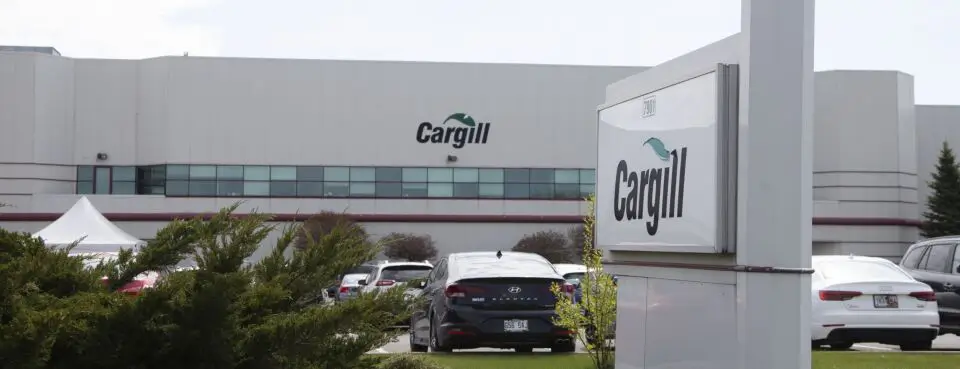
One force came to the rescue: John D. Rockefeller’s Chase National Bank, which sent its officer John Peterson to help run Cargill. Peterson became Cargill’s top officer.
Now if you are bankrupt and the big bank came with finances and rescues you and sends people to run your company, then who really owns the company? You or the people that give you money from the bank? Then the way of conducting business at Cargill changed. It was not just one more regular let’s make the business company. During the mid-1930s, Cargill started to use cut-throat tactics. In 1937, corn was a limited commodity. During 1936 crop had been a failure. Cargill purchased every possible corn future, to the tune of several millions of dollars, and organized a squeeze on the market. The Chicago Board of Trade directed Cargill to auction some of its futures to relieve the squeeze. Cargill refused and was expelled from the Board of Trade. The U.S. secretary of agriculture accused Cargill of trying to destroy the American corn market. And that is exactly what they wanted to do so that they can later buy it all with the help of the bank and create control of the entire corn market. With the help of the Chase National Bank from the time of bankruptcy in the great depression, they started to expand globally in a very short time. In 1953, Cargill set up Tradax International company in Panama to run its global grain trade. In 1956, it set up Tradax Genève, Switzerland. Thirty percent of Tradax is owned by old-line Venetian-Burgundian-Lombard banking families, particularly the Swiss-based Lombard, Odier, and Pictet banks. The investor for Tradax is the Geneva-based Crédit Suisse, which has been involved frequently in drug-money laundering. In 1985, the U.S. government accused Crédit Suisse and other large banks of laundering $1.2 billion in illegal drug money to the First National Bank of Boston. In 1977, Cargill’s engagement in a “black peseta” laundering operation at Cargill’s offices in Spain was also revealed. Cargill has been regularly cited for “blending” that is, adding foreign matter to its grain too. But it was chosen to be the controlling company of one part of the world food market by the ruling elite, and that is it. Today Cargill has expanded into every major crop and livestock on the face of the earth, in over 60 countries. It has also expanded into coal, steel, waste disposal, and metals and runs one of the 20 largest commodity brokerage firms in the United States, which is larger than most of the Wall Street brokerage houses.
When people talk about the food industry, they think of Coca-Cola and Nestle. Nestle is the biggest one on paper because oligarchy does not want regular people to know what is the real way of conducting business. That is the reason why, by design these companies like Cargill and others issue no public stock, nor annual reports. It is only truthful to say that we do not know which one is the biggest, and it is not Nestle for sure. As I have written before these companies are more secretive than any oil company, bank, or government intelligence service.
References:
Passages selected from a book: Pokimica, Milos. Go Vegan? Review of Science Part 2. Kindle ed., Amazon, 2018.
Related Posts
Do you have any questions about nutrition and health?
I would love to hear from you and answer them in my next post. I appreciate your input and opinion and I look forward to hearing from you soon. I also invite you to follow us on Facebook, Instagram, and Pinterest for more diet, nutrition, and health content. You can leave a comment there and connect with other health enthusiasts, share your tips and experiences, and get support and encouragement from our team and community.
I hope that this post was informative and enjoyable for you and that you are prepared to apply the insights you learned. If you found this post helpful, please share it with your friends and family who might also benefit from it. You never know who might need some guidance and support on their health journey.
– You Might Also Like –

Learn About Nutrition
Milos Pokimica is a doctor of natural medicine, clinical nutritionist, medical health and nutrition writer, and nutritional science advisor. Author of the book series Go Vegan? Review of Science, he also operates the natural health website GoVeganWay.com
Medical Disclaimer
GoVeganWay.com brings you reviews of the latest nutrition and health-related research. The information provided represents the personal opinion of the author and is not intended nor implied to be a substitute for professional medical advice, diagnosis, or treatment. The information provided is for informational purposes only and is not intended to serve as a substitute for the consultation, diagnosis, and/or medical treatment of a qualified physician or healthcare provider.NEVER DISREGARD PROFESSIONAL MEDICAL ADVICE OR DELAY SEEKING MEDICAL TREATMENT BECAUSE OF SOMETHING YOU HAVE READ ON OR ACCESSED THROUGH GoVeganWay.com
NEVER APPLY ANY LIFESTYLE CHANGES OR ANY CHANGES AT ALL AS A CONSEQUENCE OF SOMETHING YOU HAVE READ IN GoVeganWay.com BEFORE CONSULTING LICENCED MEDICAL PRACTITIONER.
In the event of a medical emergency, call a doctor or 911 immediately. GoVeganWay.com does not recommend or endorse any specific groups, organizations, tests, physicians, products, procedures, opinions, or other information that may be mentioned inside.
Editor Picks –
Milos Pokimica is a doctor of natural medicine, clinical nutritionist, medical health and nutrition writer, and nutritional science advisor. Author of the book series Go Vegan? Review of Science, he also operates the natural health website GoVeganWay.com
Latest Articles –
Plant Based News
-
Lidl Calls For Mandatory Plant-Based Targets To ‘Level The Playing Field’
on November 25, 2025
-
Vegetarian Society Reports ‘Significant Rise’ In Brands Adopting Plant-Based Certification
on November 24, 2025
-
10 High-Protein And Gluten-Free Vegan Recipes
on November 24, 2025
-
Gambian Stew With Easy Peanut Hummus (Domoda)
on November 23, 2025
-
National Diabetes Month: 65% Of Americans Open To Preventative Plant-Based Diets
on November 23, 2025
-
Sizzling Tofu, Kale And Black Bean Toast (High-Protein)
on November 22, 2025
-
7 Plant-Based Foods That Fight Inflammation and Boost Energy
on November 22, 2025
Top Health News — ScienceDaily
- Scientists find a hidden weak spot that may trigger Alzheimer’son November 25, 2025
Scientists have found that a mutation tied to Alzheimer’s disrupts the production and quality of exosomes—tiny cell-made communication packets. Cells with the defective SORLA protein generate fewer exosomes and ones far less able to support nearby brain cells. This weakness may be a key driver of Alzheimer’s development. The research points to new treatment strategies that enhance or restore exosome function.
- Scientists reveal a hidden alarm system inside your cellson November 25, 2025
Ribosomes don’t just make proteins—they can sense when something’s wrong. When they collide, they send out stress signals that activate a molecule called ZAK. Researchers uncovered how ZAK recognizes these collisions and turns them into protective responses. The discovery shows how cells quickly spot trouble.
- Cocoa and tea may protect your heart from the hidden damage of sittingon November 25, 2025
Scientists found that high-flavanol foods can prevent the decline in blood vessel function that occurs after prolonged sitting. Even physically fit men weren’t protected unless they had consumed flavanols beforehand. A cocoa drink rich in these compounds kept arteries functioning normally. Everyday foods like berries, apples, tea, and certain cocoa products could offer a simple way to protect long-term vascular health.
- Vegan diet beats Mediterranean for weight loss even with potatoes and grainson November 24, 2025
Participants lost more weight on a low-fat vegan diet than on the Mediterranean diet, largely due to eliminating animal foods and reducing oils and nuts. Increased intake of plant foods, even “unhealthy” ones, was strongly associated with greater weight loss.
- Scientists find hidden switch that lets tumors shapeshift and evade treatmenton November 24, 2025
Scientists are uncovering what makes some carcinomas so resistant: their ability to change identity. Two new studies reveal crucial proteins and structures that could become targets for future therapies. These discoveries deepen understanding of how tumors reprogram themselves and point toward highly specific treatments. The work raises hopes for safer, more selective cancer drugs.
- Your brain shows damage before your blood pressure even riseson November 24, 2025
Hypertension begins harming the brain surprisingly early, even before measurable blood pressure increases. Key cells related to blood vessels, signaling, and myelin maintenance begin aging prematurely and malfunctioning. These disruptions resemble early patterns seen in cognitive decline and Alzheimer’s. Encouragingly, losartan reversed some of this early damage in mice.
- Immune cells use a surprising trick to heal muscle fasteron November 24, 2025
A research team has found that specific immune cells can connect with muscle fibers in a lightning-fast, neuron-like way to promote healing. These cells deliver quick pulses of calcium, triggering repair within seconds. The mechanism works in both injury and disease models. The discovery could inspire new treatments for muscle recovery and degeneration.
PubMed, #vegan-diet –
- Learning molecular fingerprints of foods to decode dietary intakeon November 24, 2025
Assessing dietary intake from biological samples provides critical objective insights into nutrition and health. We present a reference-based strategy using untargeted metabolomics to estimate relative dietary composition. The approach learns food-specific molecular ion features first – both annotated and unannotated – via supervised classification and discriminant analysis. These features then guide extraction of corresponding MS1 intensities from unknown samples, enabling proportional,…
- Biological versus Technical Reliability of Epigenetic Clocks and Implications for Disease Prognosis and Intervention Responseon November 24, 2025
DNA methylation-based aging biomarkers, or epigenetic clocks, are increasingly used to estimate biological age and predict health outcomes. Their translational utility, however, depends not only on predictive accuracy but also on reliability, the ability to provide consistent results across technical replicates and repeated biological measures. Here, we leveraged the TranslAGE platform to comprehensively evaluate the technical and biological reliability of 18 Epigenetic clocks, including…
- Eating within planetary boundaries – a cross-country analysis of iodine provision from the EAT-Lancet dieton November 24, 2025
The EAT-Lancet Commission’s 2019 reference diet promotes health and environmental sustainability through predominantly plant-based foods, raising concerns about micronutrient adequacy, particularly iodine. This study evaluated the iodine content of the EAT-Lancet diet across sixteen countries using national food composition data. Iodine intake was modelled under three scenarios: (1) strict adherence to specified food items; (2) inclusion of a broader range of foods within each group; and (3) […]
- Vegetarian and Vegan Diets and the Risk of Hip Fracture in Adults: A Systematic Review and Meta-analysison November 23, 2025
CONCLUSION: These findings emphasize the importance of incorporating dietary patterns into strategies for promoting bone health, especially among individuals following plant-based diets. Healthcare providers should offer guidance to individuals adopting vegetarian or vegan diets to ensure adequate nutrient intake and support bone health.
- Dietary intake, nutritional status, and health outcomes among vegan, vegetarian, and omnivorous Czech familieson November 22, 2025
CONCLUSIONS: Our results show that dietary habits significantly predict nutritional biomarkers, with familial influences contributing to interindividual variability. While vegans have better cardiometabolic profiles, low iodine status could be of concern.
Random Posts –
Featured Posts –
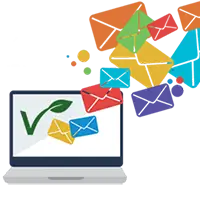
Latest from PubMed, #plant-based diet –
- Taxonomic and functional shifts in the rumen microbiome of buffalo calves under long-term strategic supplementation of phyto-feed additivesby Pramod Kumar Soni on November 24, 2025
INTRODUCTION: The present study aimed to understand the shift in the rumen microbiome of buffaloes fed diets with and without phyto-additives. The rationale was based on the hypothesis that plant-based additives can modulate the microbial population in the rumen, potentially reducing methane production and enhancing fiber degradation. Given the possibility that prolonged use of the same additives may lead to microbial adaptation and diminished efficacy, the study also investigated the effects […]
- Dietary n-3 Polyunsaturated Fatty Acids From Fish Are Associated With Better Healthy Aging Indicators: Results of the DIAPELH Studyby Alexandra Foscolou on November 24, 2025
CONCLUSION: The results underscore the significance of nutrition in older adults, highlighting the possible protective impact of n-3 PUFAs on maintaining functionality. Future prospective studies may validate these associations and contribute to the development of targeted nutritional strategies for older adults.
- Anti-Cancer, Anti-Inflammatory, and Analgesic Effects of Taxus wallichaina Extracts and Its Biosynthesized Silver Nanoparticlesby Fazli Hadi on November 24, 2025
This study investigates the green synthesis of silver nanoparticles (AgNPs) using Taxus wallichiana Zucc. and evaluates their pharmacological potential. Taxus wallichiana, a medicinal plant rich in bioactive compounds, was utilized to synthesize AgNPs in an eco-friendly manner, leveraging phytochemicals as reducing and stabilizing agents. Characterization techniques, including UV-Vis spectroscopy confirmed the peak at approximately 430 nm, reaching its maximum at 0.72 with significant surface…
- Associations of Sociodemographic Factors, Lifestyle Habits, and Insomnia Severity with Obesity Indices in Spanish Workers: Sex-Specific Differencesby José Luis Ribes Valles on November 24, 2025
Background: Obesity and insomnia are prevalent public health issues with shared behavioral and physiological pathways. However, their interplay remains understudied in occupational cohorts. Obesity and insomnia are prevalent public health issues with shared behavioral and physiological pathways. However, their interplay remains understudied in occupational cohorts. This study aimed to evaluate the associations of sociodemographic factors, lifestyle habits, and insomnia severity with multiple…
- A Plant-Based Diet Alleviates Molecular Pulmonary Abnormalities in Hypertensionby Rami Salim Najjar on November 24, 2025
Background: Essential hypertension is associated with an increased risk of pulmonary hypertension (PH). PH is diagnosed more frequently in females. Little is known about the effects of a plant-based diet (PBD) in improving lung abnormalities in PH. Methods: We compared 28- and 40-week-old female normotensive Wistar Kyoto and spontaneously hypertensive rats (SHR), maintained from the age of 4 weeks on a control refined diet or a PBD, comprising 28% fruits, vegetables, nuts and legumes. A […]
- Mediterranean and low-fat diets are equally effective in MASLD resolution at 12 weeks regardless of PNPLA3 genotype: A randomized controlled trialby Gediz Dogay Us on November 24, 2025
CONCLUSIONS: Weight reduction achieved by MD and LFD is similarly efficient in steatosis and fibrosis reduction, while PNPLA3 genotype does not affect the response to diet. Further studies investigating the impact of diet and nutrigenetics on liver-related outcomes are warranted.
